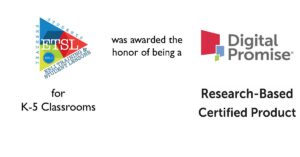If someone can talk, they can learn to read. The top priority with reading instruction is using a methodology that helps students very quickly master decoding (reading) and encoding (spelling) words accurately and automatically so they can apply what they’ve learned as they read any type of text and spell in any writing.
When researching reading in the 90s to help my daughter, I read many books and research articles on whole language (heavy focus on memorizing whole words) and traditional phonics (sounding out words based on what the letters say and phonics rules). The problem I had was that my daughter had been taught Abeka (traditional phonics) in a little private school and whole language when we moved and she was at a different school. She still was reading a year below grade level in 2nd grade, which spurred me to continue searching for how to help her. The book Why Our Children Can’t Read and What We Can Do About It led me to the very effective, rapid solution: Speech to Print (Linguistic Phonics) instruction.
There’s so much great information swirling around about how to most effectively teach decoding/encoding or phonics and spelling to all children and, for educators and parents, deciphering it all can be confusing. The goal of this blog is to provide information on some of the differences in two research supported methods. Examples and elaboration will be provided in the companion Speech to Print vs. Print to Speech webinar.
There are two explicit, systematic, sequential processes of instruction to teach decoding/encoding. Both are beneficial, have a strong research base, and can be used in Tiers 1, 2, and 3: Print to Speech (Structured Literacy) and Speech to Print (Linguistic/Synthetic Phonics). While all phonics instruction combines Print to Speech and Speech to Print to some degree, the explicit instruction differs significantly. The main emphasis of the teaching process is on either one or the other. To prevent confusion in this blog, I will refer to primarily Speech to Print instruction as Linguistic Phonics and Print to Speech instruction as Structured Literacy.
*Linguistic Phonics/primary Speech to Print approaches are also Structured Literacy. However, they differ in delivery of instruction. I learned that a Trademark was submitted by IDA for the term Structured Literacy so removed that term from describing this approach.
Speech to Print as Linguistic Phonics
- (or Synthetic Phonics) is
an approach that teaches sounds in words are represented by print (letters).
Print to Speech as Structured Literacy
Structured Literacy is characterized by the provision of systematic, explicit instruction that integrates listening, speaking, reading, and writing.
Infographic on Structured Literacy
Here is a chart of the basic differences in the two approaches:
| Structured Literacy Print to Speech | Linguistic Phonics Speech to Print |
| Match the letters to the sounds | Match the sounds to the letters |
| Letters and sounds taught together and in isolation | Sounds taught in context of words; letter names taught later |
| “What does this letter say” or “’b’ says /b/’” | “What sound do you say for this spelling?” |
| Teach onset-rime, blends, word families | Instruction starts at the phoneme level |
| Phonics rules, exceptions, syllable types | Rules free instruction, focus on patterns |
| High Frequency words (red words) taught by letter name and memorization | All words, including high frequency words, taught by sound |
| One spelling of each sound taught to mastery | Many spellings taught at once then applied |
| Reading and spelling taught separately | Reading and spelling taught simultaneously |
| Mastery of information before moving on | Focus on instructional process and applying it with information taught, mastery over time |
| Can read text that contains only the spellings that have been explicitly taught | Supported instruction/error correction process that allows advancing quickly to any text |
| Intervention average: 2-4 x/week for 2-4 years | Intervention average: 12 hours |
Like most everything in life, reading research and the delivery of reading instruction continues to evolve, providing those of us who teach reading with guidance to keep refining our instructional practices. Samuel Orton and Anna Gillingham were revolutionary in their creation of the OG system in the 1930s. More recent research in the 60s, 70s, 80s, and beyond have led to further refinements and the highly efficient and promising practices found in Linguistic Phonics. Ideally, more comparison research will be done to show the most effective and efficient practices for teaching children (and adults) to accurately and automatically read, write, and spell. Ongoing research also continues to guide teachers about how to further refine the delivery of these practices to their students for the best possible outcomes.
Thank you for your dedication to literacy! Together, we WILL teach the world to read.
**For more in depth information, check out the companion Speech to Print vs Print to Speech free webinar.





